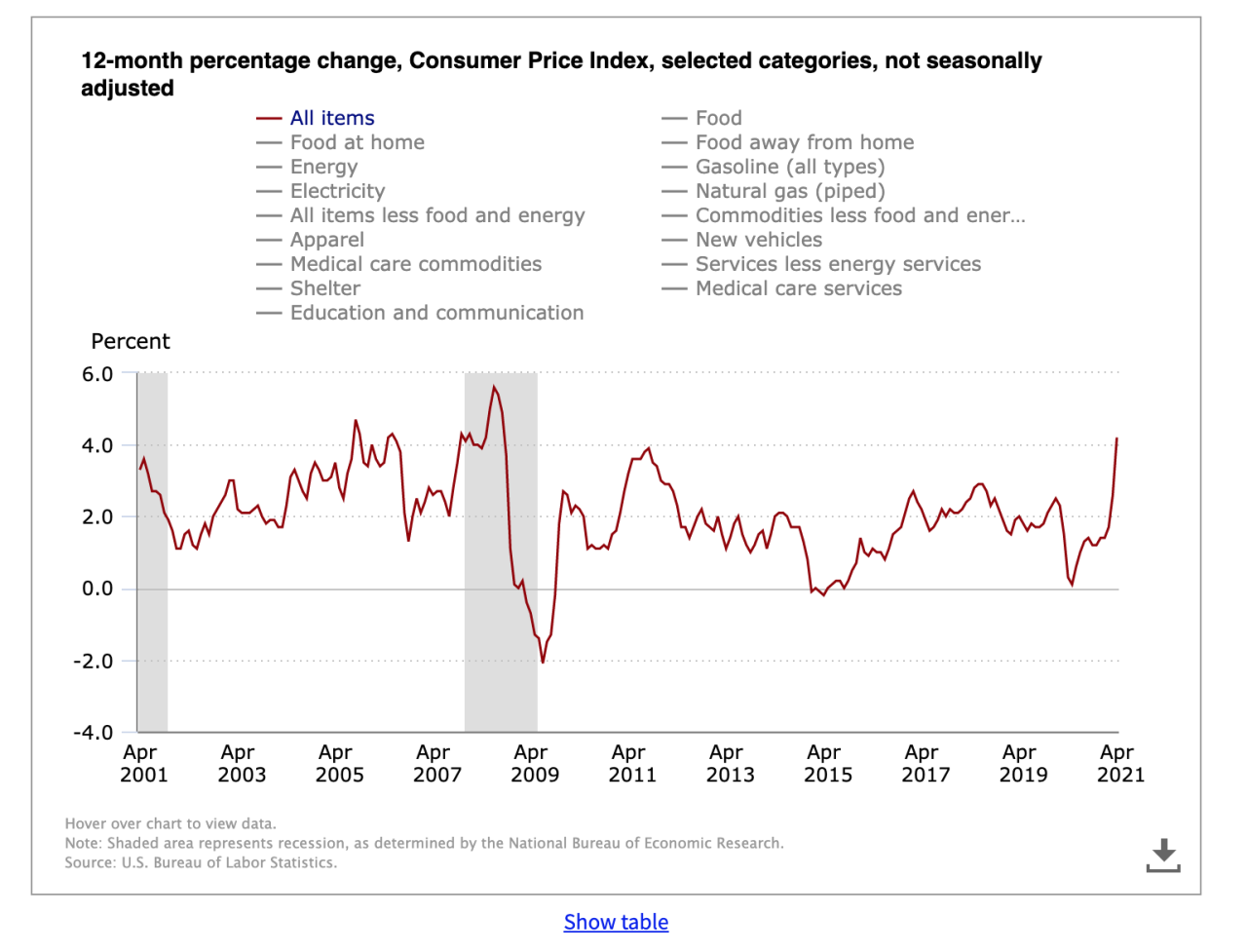CLEVELAND — From cars to chlorine and even cat food, some products have become either hard to find or far more expensive than they used to be. It is all part of a trend across the broader economy as new data released by the U.S. Department of Labor shows inflation rose by over 4% in April and higher than projected.
The 4.3% increase in the Consumer Price Index for April 2021 compared to April 2020 was the highest increase since 2008. The CPI is one of the major tools used to gauge inflation. Experts point to the sharp rise as not only indicative of increased prices but also to the unusually low inflation in April 2020, which marked the early days of the pandemic.
Officials at the Federal Reserve are not overly concerned about the increase, instead viewing it as indicative of an economy in post-pandemic transition. However, for the time being, price increases likely won’t be subsiding, especially for products like lumber and used cars and trucks.
“Demand is pretty high, which is good. That’s what we’re looking for coming out of [the pandemic], right?” said Daniel Shoag, an associate professor of economics at Case Western Reserve University’s Weatherhead School of Management. “It’s pushing up against supply constraints. Some of it is due to these lingering effects. COVID is not over globally.”

In addition to disruptions and shortages in the supply chain, the labor market has grown incredibly tight as well, said Michael Goldberg, an associate professor of design and innovation at CWRU’s Weatherhead School of Management.
“Labor markets were tight even before the pandemic so I think as we emerge and try to get the economy back and going again, I do feel like this particular challenge for business owners to attract and retain talent and the right talent is going to be of a particular challenge for them,” Goldberg said. “Retailers are looking to hire and they’re finding there is a lag in attracting talent. When there is a lag in attracting talent, wages need to increase. Those wage increases have to be passed on eventually to the prices of food and services.”
According to the Bureau of Labor Statistics, the increase in inflation was especially prevalent in the Midwest region, amounting to a 4.9% increase compared to April 2020.

In addition to the well-documented exponential increases to the price of lumber and other building materials, used car and truck prices — another indicator used to gauge inflation — have also increased. Federal data shows used car and truck prices have risen a total of 21%, including a 10% increase in April alone. The inflation data spooked investors as the Dow Jones sank nearly 700 points on Wednesday.



